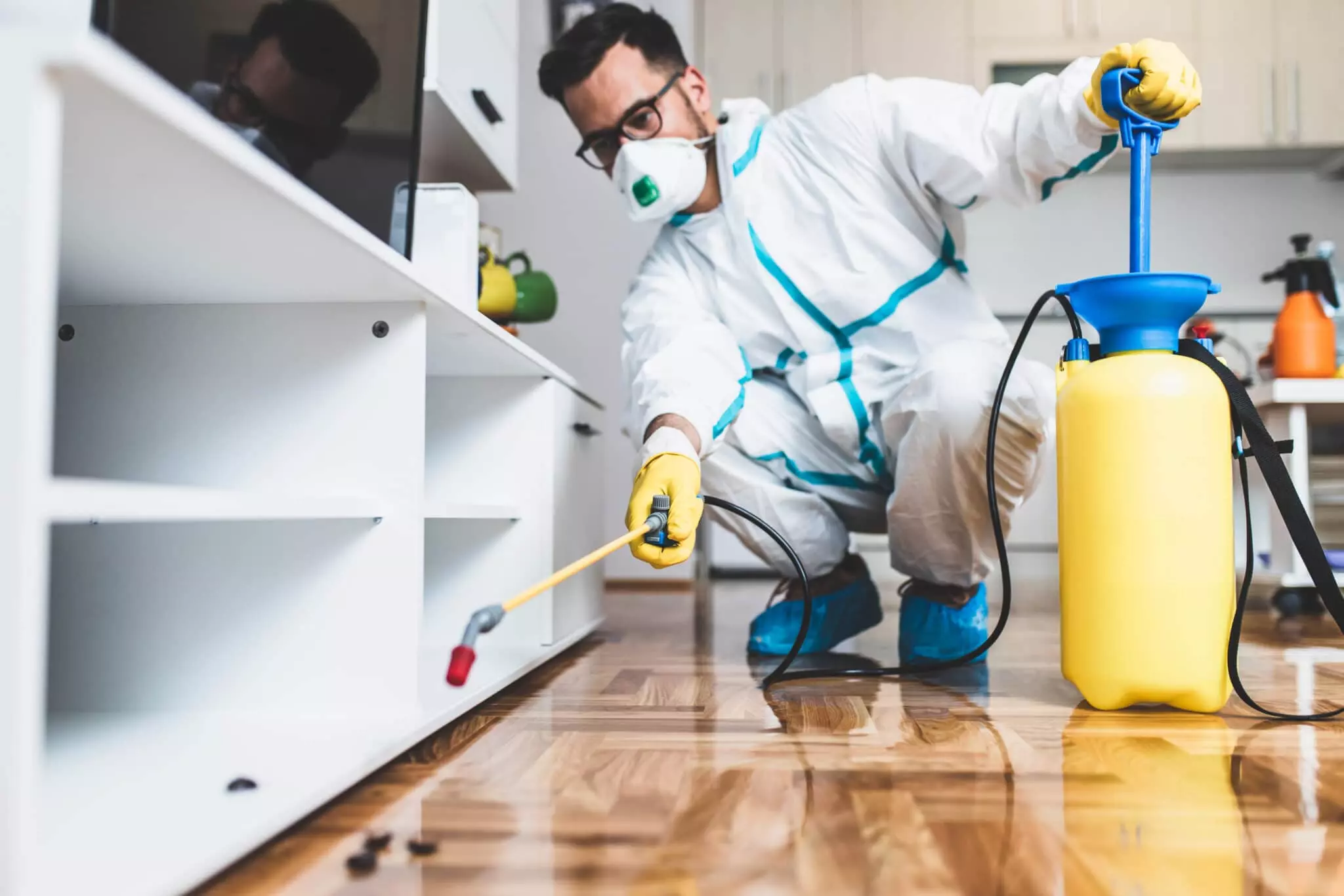A1 Bed Bug Exterminator Charlotte - Specialized Bed Bug Removal
A1 Bed Bug Exterminator Charlotte - Specialized Bed Bug Removal
Blog Article
Bed Bug Treatment Failure: Comparing Chemical Vs. Non-Chemical Solutions
In the world of pest control, specifically when taking care of the relentless issue of bed bugs, the option in between chemical and non-chemical therapy services can be a pivotal one. Both methods provide unique benefits and downsides, influencing variables such as performance, safety considerations, and overall price. By checking out the nuanced details of each technique, a clearer understanding of which path to pursue in attending to a bed pest problem can be acquired.
Efficiency of Chemical Treatments
Chemical therapies for bed pest invasions have been widely identified for their rapid and potent effectiveness in removing these pests. When taking into consideration the effectiveness of chemical treatments, it is crucial to comprehend that they can provide a extensive and quick option to a bed pest trouble.
Moreover, chemical therapies have the advantage of using residual impacts, meaning that they can continue to eliminate bed insects also after the first application. This recurring action is particularly beneficial in combating any possible re-infestations. Additionally, the fast action of chemical treatments can bring alleviation to people dealing with extreme bed bug infestations, permitting them to regain control of their living rooms swiftly.
Safety Interest In Chemical Solutions
When utilizing chemical services for bed bug therapy is making certain the safety of residents and the setting,One important element that calls for careful consideration. While chemical therapies can be effective in removing bed pests, they might present dangers otherwise dealt with appropriately. Among the main safety and security worries with chemical options is the prospective damage they can create to human health. Exposure to specific chemicals used in bed insect treatments can bring about respiratory system problems, skin irritation, or various other damaging reactions, especially in individuals with pre-existing problems or sensitivities. Additionally, incorrect application or dosage of chemical pesticides can result in hazardous deposits sticking around in the cured area, posturing lasting health risks to owners.
Moreover, the environmental effect of chemical remedies is one more substantial consideration. Some pesticides made use of in bed bug therapies may be damaging to helpful bugs, wildlife, and ecosystems if they leach right into the soil or water systems. It is important to make use of chemical treatments sensibly, following safety and security guidelines, and taking into consideration much less toxic alternatives to minimize these risks and make sure the efficient and secure administration of bed bug invasions.
Advantages of Non-Chemical Methods
Taking into consideration the prospective security worries and ecological effect connected with chemical services for bed pest treatment, checking out non-chemical strategies provides an encouraging choice with numerous unique benefits. Non-chemical methods offer a more secure alternative for households, particularly those with kids, family pets, or individuals delicate to rough chemicals. These techniques eliminate the threats of direct exposure to poisonous substances, decreasing the possibility for unfavorable health effects. Furthermore, non-chemical therapies are eco-friendly, as they do not add to air or water contamination, making them a lasting choice for bug control.
In addition, non-chemical options can be reliable in targeting bed bugs, consisting of hard-to-reach locations where chemical therapies might not pass through - A1 pest control services charlotte. Approaches such as warmth treatment, vacuuming, steam cleansing, and bed mattress encasements supply extensive elimination without the usage of harmful chemicals.
Limitations of Non-Chemical Treatments

Furthermore, non-chemical treatments frequently require several applications to attain effective obliteration. This can be lengthy and may not always assure full elimination of all bed bugs and their eggs, specifically in hidden or hard-to-reach areas.
In addition, read what he said the success of non-chemical therapies heavily relies upon proper execution and thoroughness, which can be testing for people without professional know-how. Inadequate application of non-chemical methods might cause incomplete obliteration, resulting in persistent problems and the requirement for extra treatments.
Therefore, while non-chemical therapies have their benefits, it is necessary to acknowledge these constraints and consider them when identifying the most effective method for handling bed insect infestations.
Price Comparison: Chemical Vs. Non-Chemical Options
Provided the constraints connected with non-chemical therapies, a necessary element to assess in the context of bed insect administration is the price contrast between chemical and click here now non-chemical choices. Chemical therapies commonly entail the application of insecticides by specialists, which can range from $250 to $900 per area, depending upon the seriousness of the invasion and the size of the location to be dealt with. On the other hand, non-chemical therapies like warm treatment or steam can be a lot more expensive, with prices varying from $1,000 to $6,000 for an entire home. While the initial cost of chemical therapies may seem reduced, several treatments might be called for to totally eradicate the problem, possibly enhancing the total cost. On the various other hand, non-chemical alternatives might provide an extra sustainable and environment-friendly solution, although they can be cost-prohibitive for some people. Inevitably, when thinking about the cost of bed bug therapy alternatives, it is important to consider the in advance expenses versus the efficiency and long-lasting sustainability of the selected method.
Final Thought

Considering the potential safety and security concerns and environmental influence linked with chemical options for bed pest therapy, exploring non-chemical techniques offers a promising choice with a number of unique advantages.Offered the constraints connected with non-chemical therapies, an essential aspect to review in the context of bed insect monitoring is the price contrast between chemical and non-chemical choices. In comparison, non-chemical therapies like heat treatment or vapor can be much more pricey, with costs varying from $1,000 to $6,000 for a whole home. While the first price of chemical treatments might appear lower, several treatments may be needed to totally remove the infestation, potentially increasing the general cost.In conclusion, when contrasting chemical and non-chemical bed insect therapy options, it is vital to take into consideration performance, security, advantages, restrictions, and cost.
Report this page